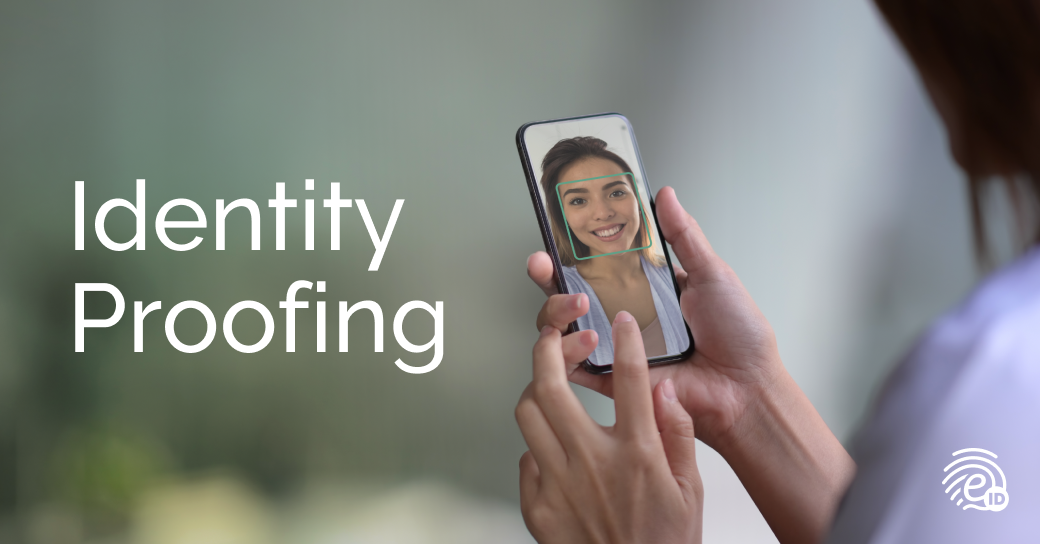Without realising it, we perform hundreds of actions every day that require us to verify our identity, in other words, to prove that we are who we claim to be. Whether it is to log in to our email account, make a bank transfer, rent a car, or even go to the doctor, the institutions or companies with which we interact need to perform this process to legitimise that we are truly us.
These procedures are fully internalised nowadays, but they bring with them certain points to bear in mind, especially if we are talking about Digital Identity verification.
Definition and use cases of Identity Proofing
Identity proofing is a method to verify and authenticate the identity of a person and can nowadays be applied to both physical and digital environments.
Identity proofing uses characteristics of the person who wants to verify his identity, based on the verification and comparison of his identity document and facial biometrics, to confirm that this person is who he claims to be and to be able to carry out the necessary formalities.
In the financial and insurance sectors, the process of verifying a user’s identity is known as KYC (Know Your Customer) or eKYC when it is transferred to the digital environment and allows a user to open a bank account, sign a contract or make a transfer with the same legal guarantees, or even more secure, than if it were a face-to-face process.
How does the identity proofing process work?
Identity proofing in the digital environment follows a similar process to the physical environment. To verify and authenticate a user’s identity remotely, the user only needs a device with a camera (tablet, desktop, or smartphone) with an internet connection and a valid identity document.
Biometric facial recognition is performed through a streaming video that performs a proof of life, asking the user to smile at the camera in order to immutably verify the identity.
It is worth pointing out that digital identity verification procedures are becoming faster and easier for users to use, avoiding friction and bureaucracy. VideoID, Electronic IDentification’s identity verification solution, allows the onboarding of a user in less than 30 seconds through a 100% digital process and in compliance with eIDAS and KYC regulations.
Schedule here an appointment and access 508 million consumers thanks to the European standardization of customer onboarding.
Identity Proofing: valid documents
One of the most important elements of proof of identity is the document with which a user identifies himself. The National Identity Card is the most common in EU countries, as it is a public, personal, and non-transferable document, which means that it is issued to a person to prove his or her identity.
Digital and physical identity verification
The physical, or face-to-face, identity proofing process is as we know it: the customer or user goes to a company (branch or commercial office, shop…), institution (tax office, social security…) or organisation and presents its identity document (ID card, passport or equivalent) so that an agent can check that the photograph on the identity document corresponds to the person who presents it.
Once the user’s identity has been proven, a photocopy of the document is made and physically stored.
Identity verification in the digital environment is done remotely, so it can be done from anywhere and at any time and is carried out through a streaming video identity verification system.
Request here a free demo of VideoID with a member of our team here and discover what our solution can do for your company
How to choose the best digital identity verification and authentication solution
Electronic IDentification is a provider of Digital Identity services based on Artificial Intelligence (AI) and Machine Learning, which enables real-time identity verification.
VideoID is the result of the unique combination of video processing and the application of AI algorithms, being the only model that allows the highest and most secure level of accuracy in the market and complies with European Regulation to verify and authenticate the identity of individuals.
In fact, there are similar solutions that use isolated images of the identity document and photographs instead of videos, but they do not meet the standards of accuracy and security required by legislation that VideoID does. For example, selfie solutions do not comply with Anti-Money Laundering regulations (AML-FT), especially in the financial sector.
Contact us for more information on highly secure digital identity solutions.





